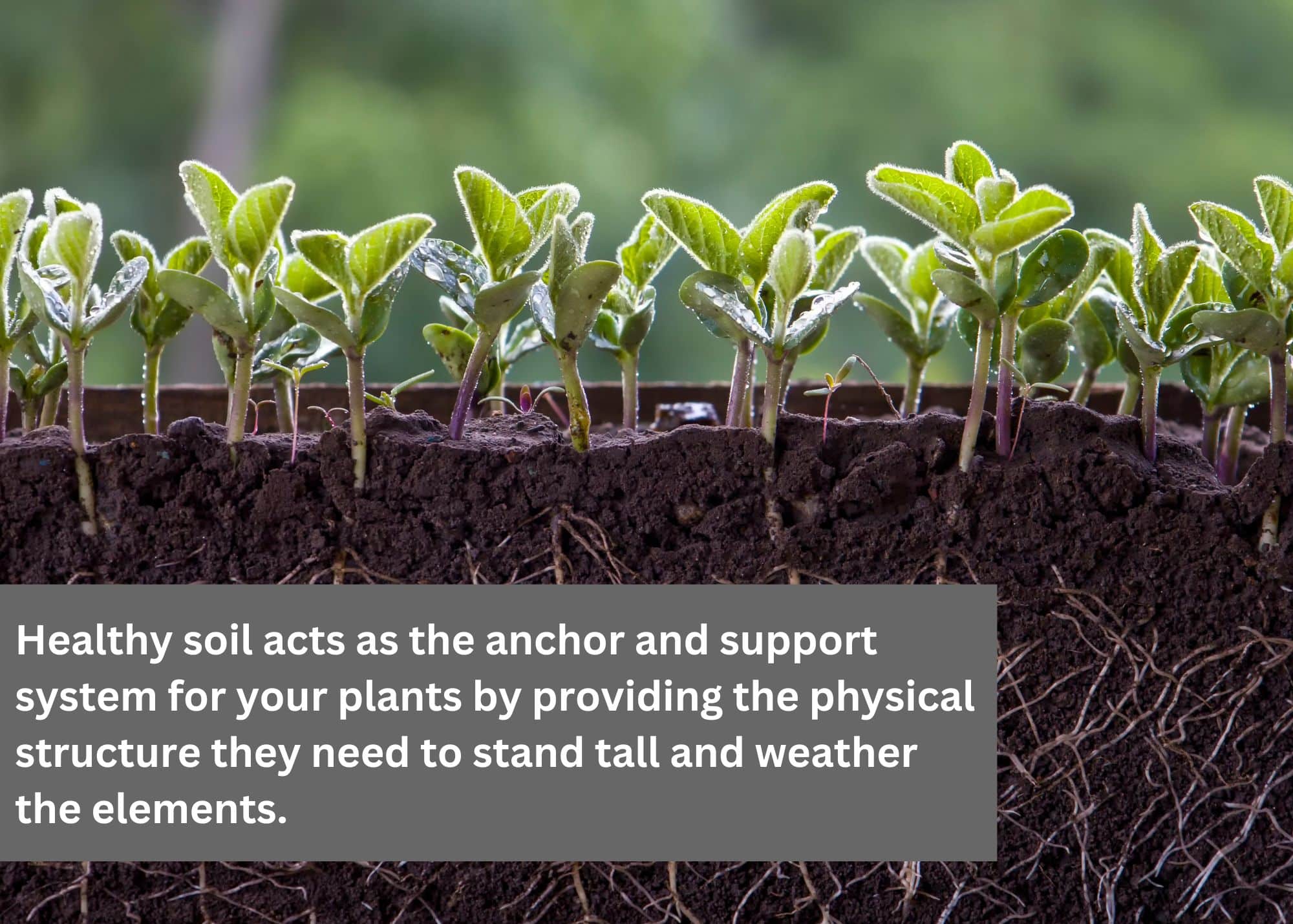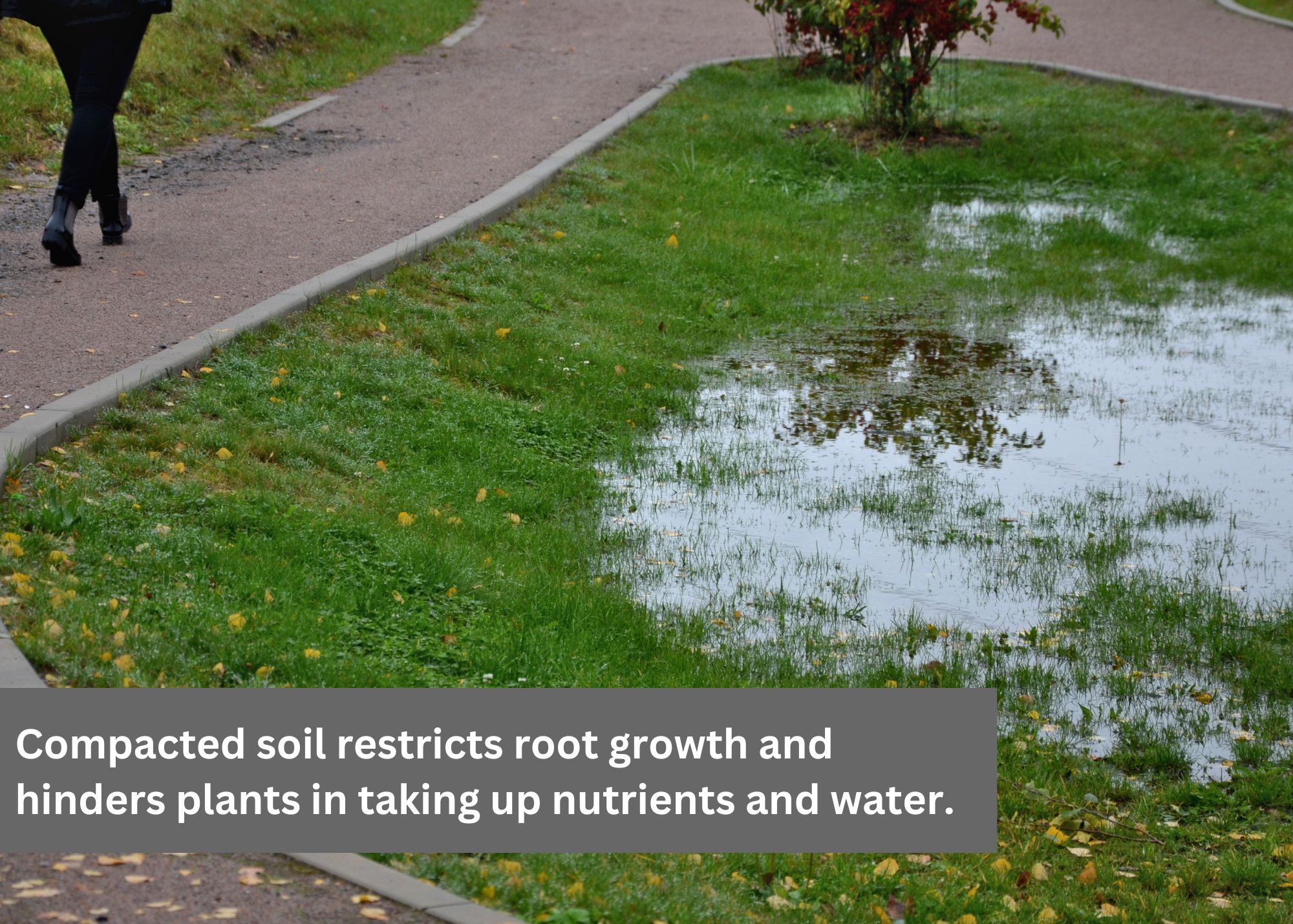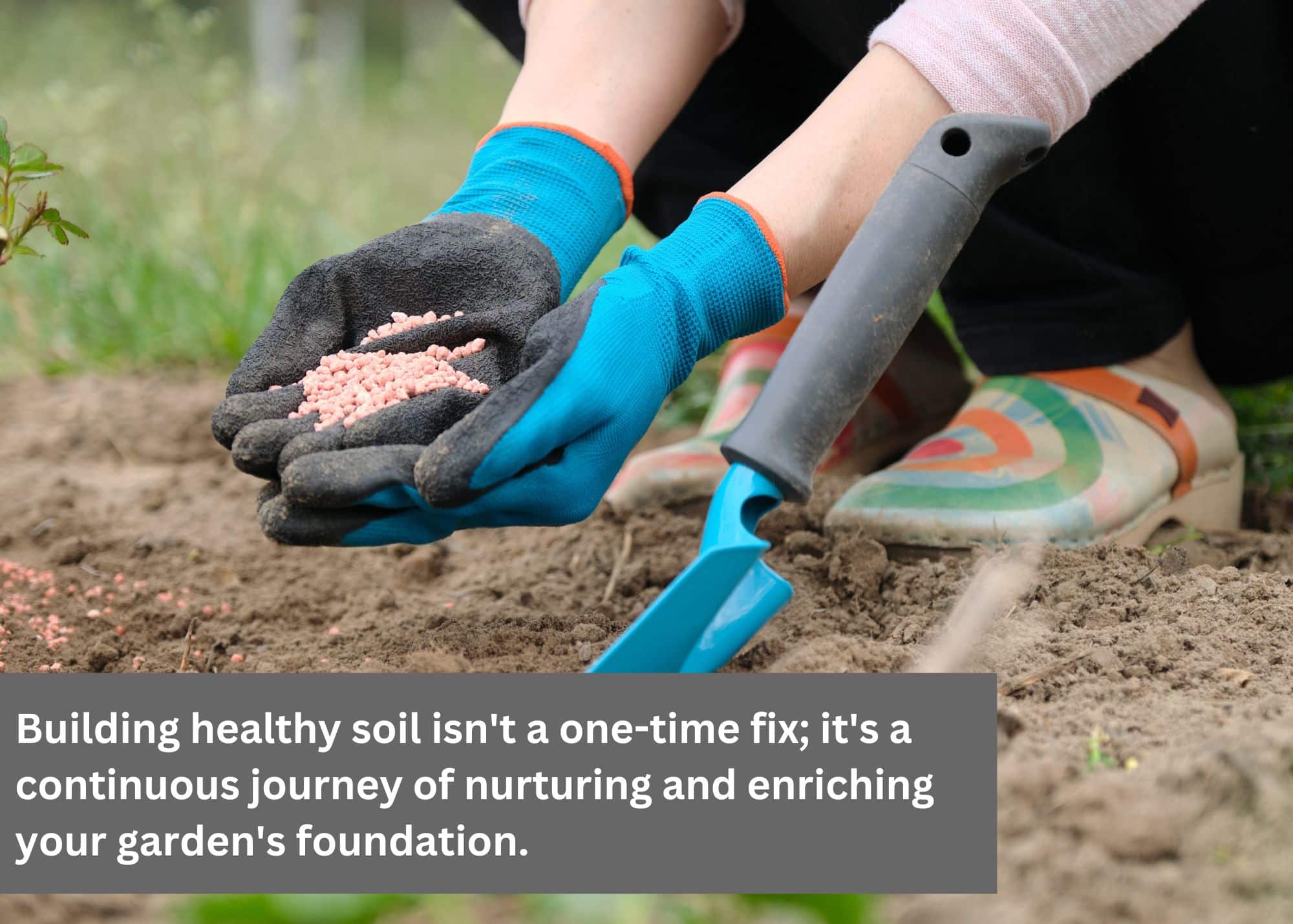Transforming Your Soil for Vibrant Plant Life
Have you ever wondered why some gardens seem to burst with life, while others struggle to produce even a single vibrant bloom? The secret often lies beneath the surface, in the hidden world of soil.
At Ebyland, we're passionate about helping you cultivate a thriving garden, and healthy soil is the foundation for all your gardening success.
Think of soil as the lifeblood of your plants. It's more than just dirt – it's a complex ecosystem teeming with beneficial organisms, and it's responsible for providing your plants with the essential nutrients, water, and support they need to flourish.
Unhealthy soil, however, can lead to a host of problems, from stunted growth and wilting leaves to pest infestations and disease.
In this guide, we'll unveil the secrets to achieving fertile soil, explore the common problems that plague unhealthy soil and outline practical strategies to bring your soil back to life. So, get ready to dig into the fascinating world of soil health and unlock the full potential of your garden!
Table of Contents
Not enough time to read? Here's a summary:
- Healthy soil is the foundation for plants, but common problems include nutrient deficiencies, poor drainage, and low organic matter.
- Soil testing helps identify a soil's specific needs, including the pH level.
- Strategies for achieving great soil health include adding organic matter like compost.
- Addressing nutrient deficiencies and breaking up compacted soil are also key steps.
Interested in digging further? Read on below!
Why Is Soil Health Important?
Just like a strong foundation is crucial for a sturdy house, healthy soil forms the basis of a thriving garden ecosystem. Here's a closer look at the key functions of healthy soil:
Nutrient Cycling Powerhouse:
Imagine a tireless team of tiny workers constantly breaking down organic matter and releasing essential nutrients for your plants. That's precisely what happens in healthy soil!
Microbes like bacteria and fungi feast on organic materials like compost and decaying leaves. As they decompose these materials, they release vital nutrients like nitrogen, phosphorus, and potassium in forms readily available for plant uptake. This continuous cycle ensures your plants have a steady supply of the nourishment they need for healthy growth.
Master of Water Management:
Healthy soil structure is like a well-oiled machine when it comes to water management. It allows for optimal infiltration, drainage, and water retention.
When water falls on healthy soil, it doesn't simply run off the surface, potentially causing erosion. Instead, it infiltrates the soil, creating a reservoir that your plants can tap into during dry periods. This porous structure also allows for proper drainage, preventing water logging that can suffocate plant roots.
The Anchor and Support System:
Healthy soil acts as the anchor and support system for your plants by providing the physical structure they need to stand tall and weather the elements.

Imagine a loose, sandy soil – it would be difficult for plants to establish strong root systems and could easily be uprooted by strong winds. In contrast, healthy soil with a good balance of mineral particles and organic matter offers a firm foundation for roots to grow deep and strong. This ensures your plants remain stable and secure.
A Buzzing Hub of Beneficial Organisms:
Healthy soil isn't just about nutrients and water; it's a teeming ecosystem teeming with life! Earthworms, beneficial nematodes, and countless other microscopic organisms play a crucial role in maintaining soil health. Earthworms create channels that improve aeration and drainage, while microbes break down organic matter and release nutrients. This diverse range of beneficial organisms keeps your soil healthy and functioning at its best.
Environmental Benefits Beyond the Garden:
The benefits of healthy soil extend far beyond your garden. Healthy soil acts as a natural filter, helping to capture and cleanse rainwater. This helps to prevent pollutants from entering waterways. Healthy soil also plays a vital role in carbon sequestration, storing carbon dioxide from the atmosphere and mitigating the effects of climate change. By nurturing healthy soil, you're not just helping your garden thrive – you're contributing to a healthier planet for everyone.
Summer is the high point for landscaping. With warm days and plenty of sunshine, a well-landscaped yard and garden will be lush and inviting. There are almost endless varieties of bushes and flowers to choose from in the summertime, but here are ten of our favorites – just keep in mind that every plant thrives in specific conditions, such as the amount of sunlight it receives and the type of soil it prefers. Make sure to plant your flowers, shrubs, and trees in a place where they will thrive!

Nutrient Deficiencies
Plants require a balanced diet of essential nutrients, just like humans do. However, deficiencies in key nutrients like nitrogen, phosphorus, and potassium can significantly impact plant health.
Nitrogen plays a crucial role in leaf growth, while phosphorus is essential for root development and flower production. Potassium helps regulate water flow within the plant and is vital for overall plant health. Soil testing will reveal any deficiencies in your soil, allowing you to replenish missing nutrients through targeted amendments like organic fertilizers.
Poor Drainage
Imagine your plants constantly sitting in a puddle – that's the unfortunate reality in soils with poor drainage. This occurs when water struggles to infiltrate or drain from the soil, leading to waterlogging. Excess water saturates the air pockets in the soil, suffocating plant roots and hindering their ability to function properly. Stagnant water can also promote the growth of harmful pathogens, leading to root rot and other plant diseases.
Low Organic Matter
Organic matter, such as compost and decaying plant material, plays a vital role in healthy soil. It acts like a sponge, improving water retention and creating a porous structure that allows for proper aeration.
Organic matter also feeds the soil biota, the army of beneficial organisms that contribute to nutrient cycling and overall soil health. Low organic matter content leads to poor soil structure, reduced water retention, and decreased nutrient availability for plants.
The pH Balancing Act: Acidity vs. Alkalinity
Soil pH refers to the level of acidity or alkalinity in the soil. It's a crucial factor that impacts nutrient availability for plants. Most plants thrive in slightly acidic to slightly alkaline soils (pH range of 6.0 to 7.5). Highly acidic or alkaline soils can restrict the availability of essential nutrients, making it difficult for plants to access them. Soil testing will reveal your soil's pH level. You will be able to adjust it if necessary through amendments like lime (raises pH) or sulfur (lowers pH) to create an environment optimal for plant growth.

Knowing Your Soil's Needs: The Power of Soil Testing
Just as a doctor relies on tests to diagnose a patient's condition, soil testing acts as your diagnostic tool for understanding your soil's health. It reveals a wealth of information about your soil's composition, including nutrient levels, pH balance, and organic matter content. Armed with this knowledge, you can tailor amendments and practices specifically for your soil's needs, ensuring you're providing the optimal environment for your plants to thrive.
Soil testing allows you to move beyond guesswork and target specific deficiencies. For instance, if your soil test reveals a nitrogen deficiency, you can choose a fertilizer rich in nitrogen to address the problem. Similarly, knowing your soil's pH level helps you determine if amendments like lime or sulfur are necessary to create a more plant-friendly environment.
There are two main options for soil testing: home test kits and professional labs. Home test kits offer a convenient and affordable way to get a basic understanding of your soil's health.
However, for a more comprehensive analysis, professional lab testing provides detailed information about a wider range of factors.
You can purchase a home test kit at your local home improvement store, such as Lowes or Home Depot. For those seeking a professional lab test, reputable resources like your local cooperative extension office or university agricultural labs can provide guidance.
By investing in a soil test, you're making a wise investment in the future of your garden. The valuable insights gained from soil testing empower you to create a thriving environment where your plants can flourish.
The Path to a Fertile Paradise: Strategies for Achieving Great Soil Health
Building healthy soil isn't a one-time fix; it's a continuous journey of nurturing and enriching your garden's foundation.

Let's now explore key strategies to transforming your soil from ordinary to extraordinary:
The Power of Organic Matter
Think of organic matter as the cornerstone of healthy soil. It encompasses a range of materials like compost, aged manure, and decaying plant residues. Adding organic matter offers a multitude of benefits:
- Improved Soil Structure: Organic matter acts like tiny sponges, creating spaces between soil particles. This allows for better air and water circulation, fostering healthy root development and drainage.
- Increased Water Retention: Organic matter helps the soil retain precious moisture, acting like a natural reservoir during dry periods. This reduces the need for frequent watering and ensures your plants have access to the water they need to thrive.
- Enhanced Microbial Activity: A thriving community of microbes lies at the heart of healthy soil. Organic matter serves as a food source for these beneficial organisms, stimulating their activity and promoting nutrient cycling. This breakdown process releases essential nutrients in forms readily available for plant uptake.
Ebyland offers a range of high-quality organic matter solutions to jumpstart your soil's journey toward paradise. Our garden soil is a rich blend of composted materials and minerals, providing a fertile foundation for your plants. Additionally, our mushroom compost is a nutrient-packed amendment teeming with beneficial microbes, perfect for enriching your existing soil.
Beyond these options, consider incorporating cover crops – plants grown specifically to improve soil health. They add organic matter as they decompose, suppress weeds, and help prevent erosion. Mulching with organic materials like wood chips or bark also contributes to healthy soil by retaining moisture, suppressing weeds, and slowly breaking down to add organic matter over time.
Combating Compaction: Giving Your Soil Room to Breathe
Compacted soil acts like a suffocating blanket for plant roots. Here's how to identify and combat this issue:
- Signs of Compaction: Difficulty pushing a screwdriver into the soil or water pooling on the surface after rain are telltale signs of compaction.
- Breaking Up the Tight Squeeze: Core aeration involves punching small holes in the soil to improve air and water circulation. This practice is most effective when the soil is slightly moist. Additionally, avoiding heavy traffic on wet soil helps prevent compaction in the first place.
Addressing Nutrient Deficiencies: Tailoring a Balanced Diet for Plants
Plants require a balanced diet of macronutrients (needed in larger quantities) and micronutrients (needed in smaller amounts) for optimal growth. Common macronutrients include nitrogen (vital for leaf growth), phosphorus (essential for root development and flowering), and potassium (helps regulate water flow and overall plant health).
Your soil test results will reveal any specific nutrient deficiencies. With this information in hand, you can choose targeted amendments like organic or inorganic fertilizers. By addressing these deficiencies, you make sure that your plants have access to the essential nutrients they need to thrive.

Improving Drainage: Ensuring Roots Don't Drown
Poor drainage can lead to waterlogged soil that suffocates plant roots and invites disease. Here's how to identify and address drainage issues:
- Signs of Poor Drainage: Puddles remaining on the surface after rain or a spongy feeling when walking on the soil indicate poor drainage.
- Enhancing Drainage: Raised beds offer excellent drainage solutions, particularly in areas with heavy clay soils. Amending existing soil with coarse sand or additional organic matter can also improve drainage by creating larger pore spaces for water to infiltrate and drain more effectively.
Cultivating a Thriving Garden Starts with Healthy Soil
Healthy soil is the foundation for a thriving garden, nurturing your plants and creating a vibrant ecosystem teeming with life. By understanding the importance of soil health and the common problems that can plague it, you can take action to transform your soil from ordinary to extraordinary.
This guide has outlined key strategies to achieve a fertile, soil paradise. At Ebyland, we're committed to providing you with the resources and products you need to cultivate a healthy and flourishing garden.
Explore our website or contact our knowledgeable staff today to learn more about soil testing, organic amendments, and other soil health solutions.
Remember, healthy soil starts with you – let's embark on this journey together and witness the magic unfold in your garden!





